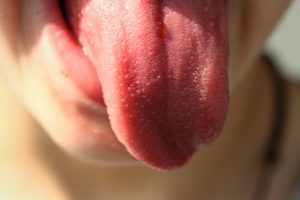
The term hairy tongue or lingua vilosa is used to describe abnormal coating on the top surface of the tongue, It is a relatively common, temporary, and harmless condition.
Hairy tongue occurs due to lack of stimulation / abrasion to the top of the tongue. The result is a buildup of a protein known as keratin
When this happens, food, bacteria, or yeast can accumulate in the over-keratinized filiform papillae network and cause odd discoloration. It is most frequently referred to as black hairy tongue (lingua villosa nigra); however, hairy tongue may also appear brown, white, green, pink, or any of a variety of hues depending on the specific etiology and secondary factors.

The incidence and the prevalence of hairy tongue increase with age. A hairy tongue is almost always painless and rarely causes any other symptoms. Patients frequently complain of a tickling sensation in the soft palate and the oral pharynx during swallowing. In more severe cases, patients may actually complain of a gagging sensation. Retention of oral debris between the elongated papillae may result in halitosis.
In most instances, dentists or health care providers can make the diagnosis based on clinical appearance. Biopsy of hairy tongue is not necessary.
Treatment and prevention are typically achieved through changes to a person’s lifestyle that may have trigger the onset of hairy tongue. Oral hygiene is the best way to stop hairy tongue from occurring by:
- Brush at least twice a day Don’t just focus on your teeth.
- Brush your tongue, too.
- The spaces between your teeth can hide bacteria and food, flossing is important.
- Try to drink less of coffee, black tea, and soda which are highly abrasive liquids.
Don’t forgot to see your dentist frequently to get more advice from him or her.




